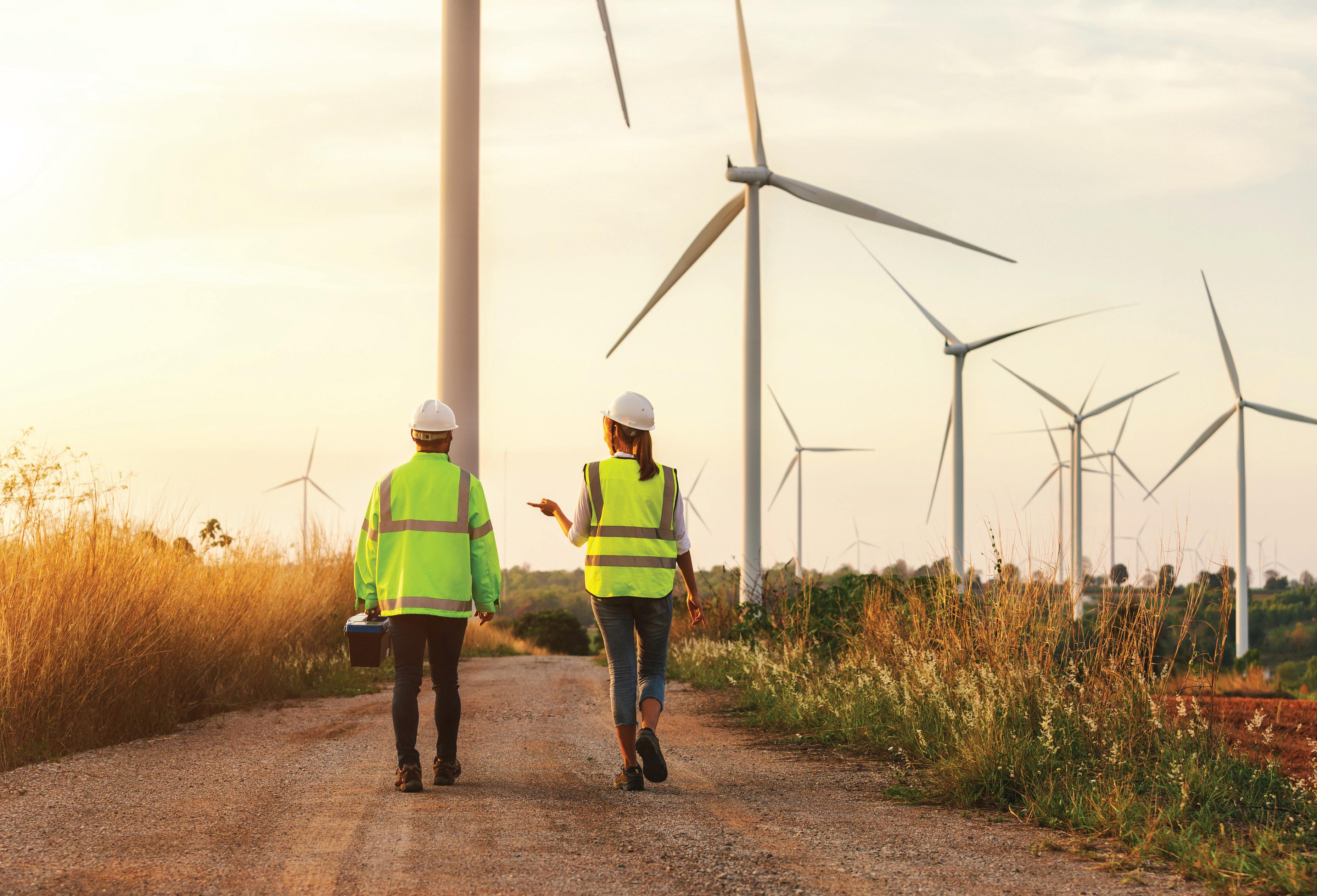
3 minute read
ENERGY OUTLOOK
Turbine Troubles
By Royce Lowe
globe. Some 800 of the 5.X platform have been produced to date, with 100 having been delivered to clients.
According to Reuters, Siemens Energy’s management board has set up a task force to establish the scope of deepening problems at its wind turbine division Siemens Gamesa, including quality issues at its two most recent onshore platforms, two supervisory board sources, “people familiar with the matter,” said. The problems were discovered, or “unveiled,” in June, and led to a 37% drop in Siemens Energy’s shares. This fact itself is a reason for an investigation.
There is one particular question that
The problems surrounding recent turbine failures on Siemens Energy wind platforms have turned into a veritable media feast. There have been failures concerning predominantly the 5.X platformreferring to the height and power output of the turbines - which is a relief since there are some 63,000 Siemens turbines rotating around the continued needs to be answered, namely why did Siemens Energy’s leadership fail to spot the issues during the due diligence process ahead of its recent takeover of the remaining stake in Siemens Gamesa, the sources said.
An analyst told CNBC that the pace of expansion, and the fact that many components of larger turbines haven’t actually been in use for very long, means there could be inherent risks throughout the sector. “We have to acknowledge that putting brand new machinery, whether it’s on-shore or even more difficult off-shore wind farms, and the pace of change in that machinery has put us into slightly uncharted territory,” he said. Further, “Although it’s hard to tell at the moment, my best guess is that this is probably an industry-wide issue. It wasn’t that Siemens Gamesa is a bad operator as such; it’s that actually some of the normal protocols and time in use, operational data in use, is relatively limited.”

To date, nobody has come forward with a reason for these failures, nor, in fact, their overall nature. It’s possible there are design flaws. Technical issues with installed and unfinished wind turbines - complex products that contain hundreds of moving parts - will cost more than
€1 billion ($1.1 billion U.S.) to fix, though this number could rise. Keep in mind that these costs ultimately are paid for by the consumer in their electric bill.
The wind industry has made great strides over the past two decades, lowering costs to rival, and sometimes undercut, those of fossil fuels while boosting efficiency with ever-bigger turbines. “These cost reductions have been achieved with innovations in turbine technology and by pushing the boundaries of engineering,” said Christoph Zipf, a spokesman for industry body WindEurope, to CNBC. He said that 20 years ago, a typical wind turbine would have 1 million watts of capacity; today, European OEMs are testing 15 MW turbines. So the turbines have become bigger, putting an onus on quality, materials, and longevity. WindEurope denied that industry-wide technical failures could be on the horizon, insisting that “the problems at Siemens Gamesa are limited to Siemens Gamesa.”
Zipf continues, “Big turbine failures are extremely rare given the number of turbines installed in Europe already. However, the competition in the sector is pushing OEMs to come up with bigger and better turbines at a fast rate, maybe faster than in other sectors,” he said. Zipf also challenged the notion that the industry has entered “uncharted territory,” arguing that the changes in turbine technology have been “incremental and evolutionary.” This seems to make more sense.
ONYX Insight monitors wind turbines and tracks over 14,000 across 30 countries. It says that most turbines are designed and certified for 20 years but contain components that will fail during that time due to a “compromise between the cost of the system and reliability.” “We have been aware for some time that turbine failure rates across the industry can, and should, be more widely understood,” Evgenia Golysheva, V.P. of Strategy and Marketing at ONYX Insight, told CNBC. ONYX goes on to say that it’s not that the turbines are badly made, but there is now a compromise between the cost of energy and targeted reliability. Those who build, finance, and operate wind turbines need to have a realistic picture of how many failures to expect.”
The Outlook: Like any in-depth investigation, there will be an outcome to the results of this task force, and it may point to fabrication techniques, design issues, materials used, assembly approaches, or some combination. Ultimately, turbines will become more reliable and productive over their intended service life. What is being experienced now are growing pains in the industry.
Author profile: Royce Lowe, Manufacturing Talk Radio, UK and EU International Correspondent, Contributing Writer, Manufacturing Outlook n
AUGUST 2023










